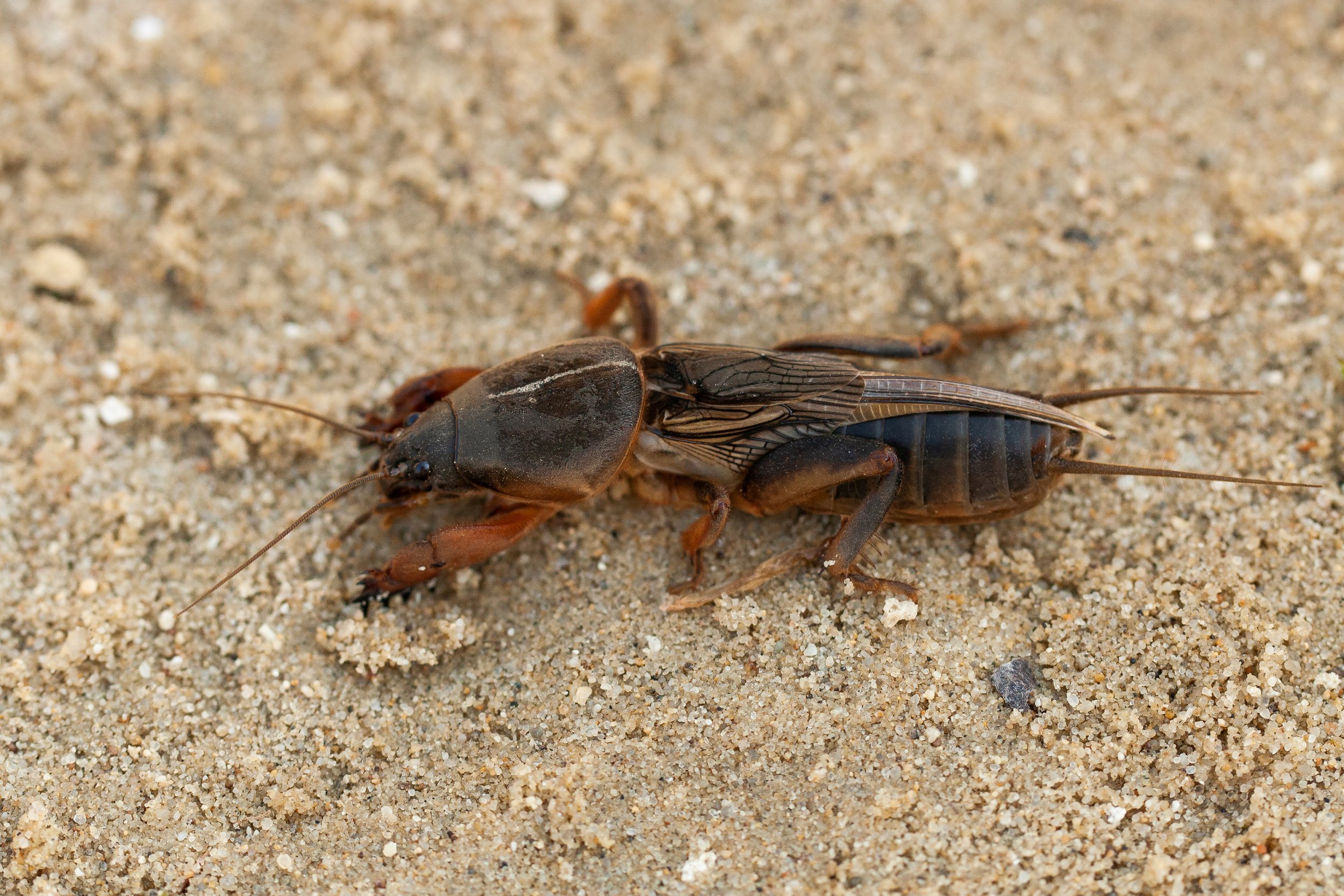The Mystery of the Karlštejn Scorpion
Zoo Praha | 01. 01. 2022
A family trip to Karlštejn reminded me of an old mystery, closely related to this castle. First, I had fun trying to solve it by myself, later also with my two colleagues from Prague Zoo – Dr Ivan Rehák and Dr Jaroslav Šimek.

The European tadpole shrimp in a photo taken at a locality famous for its occurrence, in the former village of Hrachoviště in Brdy. The size of local tadpole shrimps was far from its stated maximum size.
The European tadpole shrimp in a photo taken at a locality famous for its occurrence, in the former village of Hrachoviště in Brdy. The size of local tadpole shrimps was far from its stated maximum size.
Jesuit Bohuslav Balbín (1621–1688) wrote in his work Miscellanea historica regni Bohemiae in relation to Karlštejn: “It is still rare and not explored enough, what the reverend father Jan Tanner from our Society, an eyewitness, credible and exceedingly extraordinary man, has told me recently. Kestrels nest in large numbers in the towers of the Karlštejn Castle. They bring to their nests for themselves and their offspring from neighbouring rocks and caves some large species of insects that no one has ever seen anywhere else. (Villagers refer to it absolutely incorrectly by Czech word štír which, however, means the same as Scorpio). It has a bald head, similar to a turtle’s carapace. The rest of the body is oblong, with no shell. The entire body of this insect or animal is coloured yellow. It has four legs, a tail that is not like a turtle’s, but is thick, huge and ugly, measuring a good three inches in width. The entire body with its length from the head to the end of the tail equals or even exceeds half of a Prague cubit. I wish to see those who know it to determine something about the origin of this insect. I personally have never been able to see such a strange and turtle-like species without a carapace.”
A weird creature indeed! What could it be?
According to the writer Otomar Dvořák and naturalist and philosopher Professor Stanislav Komárek, it was most likely a European tadpole shrimp (Triops cancriformis), an extraordinary and very ancient crustacean that rarely occurs in puddles in fields or in ruts flooded by water. However, this identification of the animal described by Balbín cannot be accepted without some doubt.
First let’s have a look at a modern description of a tadpole shrimp in the Atlas of distribution of large branchiopods in the Czech Republic (Nature Conservation Agency of the Czech Republic, 2016):
“European tadpole shrimps are markedly large and robust branchiopods. They reach length of more than fifty millimetres, together with caudal rami over one hundred millimetres. Their typical sign is an oval carapace protecting from above the dorsal side of the head and thorax. The carapace is firmly connected to the head. Cylindrical body consist of 25 to 52 ring-shaped segments, most of them bearing flattened appendages. The abdomen is created by spiral body rings and ends by long caudal rami.”
Even if we consider the fact that Balbín was writing down something that another person was reporting to him, maybe from memory, it is questionable whether this is adequate to explain the differences between the appearance of the tadpole shrimp and the creature described. Balbín’s references to the bald head, turtle-like carapace and yellowish colouring would perhaps still match. However, tadpole shrimps don’t have four legs, as well as a “thick, huge and ugly” tail.
Also, Balbín’s information on the size of the animal is problematic. A Prague cubit measured almost sixty centimetres so with the reported half-cubit length Bohuslav Balbín’s creature would reach three times the dimension of the largest specimen of tadpole shrimp.
It may also seem strange to somebody that kestrels would hunt tadpole shrimps from puddles. But the ornithologist Professor Karel Šťastný did not rule this out in his article in the magazine Živa. Common kestrels can adapt very quickly – and if they had drying puddles with a lot of tadpole shrimps in near proximity to their nests, why not to use them. Yes, the tadpole shrimp is very rare now, but it didn’t have to be like that always, and definitely not continuously. For example, in 1876 Edvard Hoffmeister wrote in the magazine Vesmír that near Kolín he “captured many hundreds of these crustaceans”. In summary: the European tadpole shrimp matches Balbín’s report on the mysterious Karlštejn “scorpion” only to a small degree. Therefore, we must ask whether any other animal would correspond with his description much better. And indeed, there is second possible solution to the entire mystery. My former teacher and long-term colleague Ivan Rehák came up with it in our discussion, and I say straight away that I consider his version to be much more likely.
A mole cricket plays a part in it.
It is probably unnecessary to reintroduce it, yet the European mole cricket (Gryllotalpa gryllotalpa) is a species of Orthoptera insect adapted to an underground life. An adult can measure five to six centimetres. It is brown in colour, with almost black head and shield. The forelegs are modified for digging and the other two pairs of limbs are normal, used for walking. The elytra reach approximately half the length of the big and plump abdomen, back membranous wings are significantly longer, and they stick out from under the elytra. The antennae are relatively short.
The extent of the similarity with the creature from Miscellanea is very significant, whether it is the head – in reality also the thorax – similar to a turtle’s carapace, or “oblong” rest of the body, not covered by anything. Also, the “thick, huge and ugly” tail matches the description. But what really excited me is the coincidence with Balbín’s description of “four legs” – the first pair of legs modified in “shovels” an unaware observer may not consider to be legs.
Sure, there is no consistency in colouring and size. The mole cricket is about one fifth the size compared to the description; but let me remind you of the fact that Balbín was recording somebody else’s observation, probably with hindsight. As for the colouring, the mole cricket is yellow brown from below, and in kestrel’s claws it could have been seen from this side. And while we are talking about kestrels, which were supposed to hunt the animal, as described by Balbín, Ivan Rehák remarks: “For me, the mole cricket better fits with the food biology of common kestrels. I have no doubts that it is an excellent bite for a kestrel! And because mole crickets can sometimes locally occur in large numbers, kestrels can zero in on them when presented with such an opportunity.”
Finally, one more observation, the trail on which my deputy Jaroslav Šimek led me for a change. In the 19th century, the mole cricket was commonly referred to as “mole-footed scorpion” or “underground scorpion”. This term we can find, for example, in an article on the mole cricket in Vesmír in 1873, or in Janský’s Malý živočichopis from 1893. Národní politika from July 19, 1942, also explicitly mentions that the mole cricket is commonly referred to as “scorpion”. In this context let’s recall what Bohuslav Balbín wrote about a strange insect, which became a pray of kestrels from Karlštejn: “Villagers completely mistakenly refer to it in Czech as ‘scorpion’.” But maybe it didn’t have to be a mistake, only Balbín didn’t know the terms used by villagers. Thus, we have another finding supporting the assumption that there were mole crickets in Karlštejn.
What Bohuslav Balbín really wrote about, we will probably never know with steadfast certainty. Therefore, I can’t declare this small mystery to be solved, but I dare to say that the correct answer probably will be a mole cricket.

The European mole cricket differs greatly from other species of Orthoptera; it is no surprise that it formerly was called a “scorpion”.








